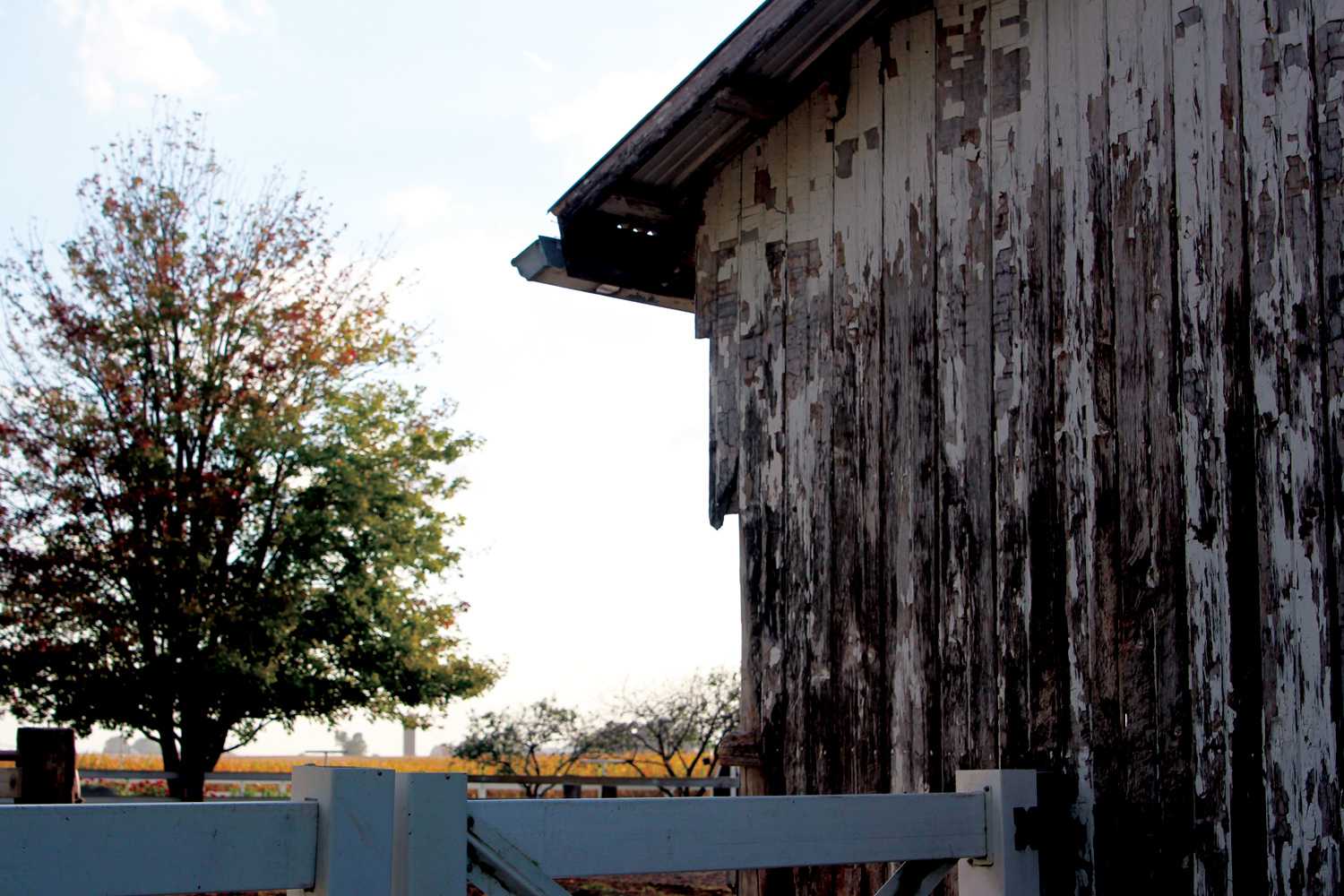Your donation will support the student journalists of Iowa City High School. For 2023, we are trying to update our video and photo studio, purchase new cameras and attend journalism conferences.
There’s No Place Like Home
An Amish family explains life as they know it in Kalona
October 15, 2015

It took Megan Miller fifteen minutes to walk home from school. In ninety-degree heat, she would trek the sides of gravel roads in her long-sleeved cotton dresses. For many students, coming home after school is a period for them to unwind. For Megan, approaching her farm means that her work day is just getting started.
“The two things we try and teach our children, besides Jesus came here to die for our sins, is a good work ethic and common sense,” Warren Miller said. “We make sure they have fun too, but at the same time we’re trying to teach them to work young.”
Tucked in between the southern country roads of Kalona, Iowa, resides a modest thirty-acre family farm owned by Warren and Ila Miller and their eight children. Living an agrarian lifestyle is not unusual, especially from a state known for its crop production. However, the Millers live in a city with a reputation of its own: Kalona is Iowa’s oldest and best-known Amish settlement.
The Amish are a group of christians who came to the United States in the 18th century to avoid persecution in Switzerland. They are anabaptist, which means that they are not baptized until they officially join the church in adulthood. Additionally, they live by a set of rules called Ordnung, which guide their clothing, technology use, and behavior.
Although every family member is raised Amish, and therefore without many modern technologies, both parents stress that they are not excessively different from what outsiders are lead to believe. Megan, Millers’ the 19-year-old daughter, enjoys many hobbies popular with girls her age, like volleyball and spending time outdoors.
“We like to go camping,” Megan said. “That’s about one of my favorite things to do. Somebody Amish owns the land; it has timber and a big pond. We camp in tents, but some people just like to sleep outside under the stars.”
Ila, the mother of the family, has her own favorite pastimes.
“We break horses and we have a half mile track in our hay field or corn field. [My daughters] like to walk out their with friends. It’s away from the road,” she said. “Sometimes, when I want to be alone, I like to go out there. It’s relaxing.”
Although the Millers enjoy relaxing and spending time together, they put most of their energy each day into work.
“Normally [our oldest son] is doing carpenter work and comes home in the morning and evening. We don’t see much of him,” Ila said. “Our second, Megan, has a part time job down at the lunch room working in the kitchen and cooking food. Otherwise, she’s pretty well at home. She might help here and there if some other person needs help. That’s where my next daughter is right now, Monica. That’s what she did all summer, she helped out at our neighbors.”
Although historically, most Amish men have worked as farmers, today the majority have choose to work in carpentry. Others are employed as farmers, wood workers, or cabinet makers. Young women have opportunities in baking, teaching, or working at a local hen house. Typically, these will be part time jobs, with the rest of their hours spent assisting with chores at home.
“Boys around here wouldn’t want to work in restaurants,” Ila said. “Mainly their jobs are higher income than girls, which is what we need because they are going to be the leadership in the family. It’s just that the boys, well they need to make a living for the family. We’re [girls] not responsible for making a living.”
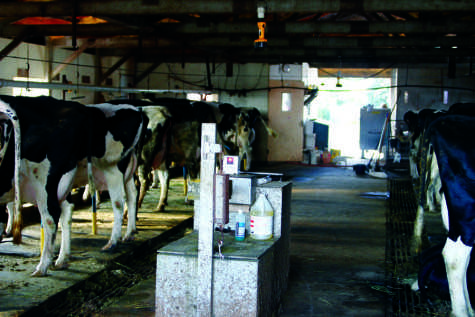
While most occupations are fairly gender-segregated, Megan doesn’t feel limited in her job options.
“I wouldn’t really want to be a carpenter,” she said. “It’d be fun for about a week, but I wouldn’t want to do it every day.”
Most women do a variety of jobs, both on and off the farm.
“Of course our girls do a little bit of everything; they’ll catch a chicken,” Warren said. “They’ll do anything. It’s ridiculous.”
Ila and Warren’s remaining five children, ranging in ages from six to 12, all go to the same one room school about half a mile away from their farm. After the eighth grade, Amish children stop going to school and begin working either at home with their parents or part time at a small business.
“[School] was fun,” Megan said. “We have ten different schools in the community, so I only had two boys in my class. It was fun there, but once you’re out you don’t wish to go back.”
Monica Miller, at 17 two years Megan’s junior, was in a class with only seven other students, which had decreased to four by her eighth grade year. Since graduation she has had a job caring for a neighbor’s five children.
“I wouldn’t want to go to college,” Monica said. “Once we’re out of school we’re just glad to be out.”
Megan and Monica’s lack of interest in pursuing additional schooling is not uncommon for young people in their community.
“I personally only know of one that took high school through the mail. Our neighbor does a lot of electronic work–he fixes basically every electronic thing you take into him–he took extra schooling through the mail, but he didn’t actually go to college,” Warren said. “They’ll go to more school if it’s some particular job that they want. But as a general rule, there sure isn’t a lot of that.”

Generally, Amish children stop their education after eighth grade because the vocational education they’ll need for jobs is available through the community. Amish parents will teach their children the skills that will serve them in future occupations specific to their lifestyle.
Ila believes this system works better for her daughters, who were too confined in a classroom.
“When they’re out of school in eighth grade, or age 14, they’re at home with their parents. Kids learn a lot just from that,” Ila said. “The boys follow Dad, and the girls do what I do: they learn how to sew and cook and bake and can and garden. Sometimes I think I can’t almost teach them everything by the time they’re 21.”
Like teachers, the Miller parents have conceived several lesson plans designed to test their children on responsibility and work ethic. Currently their youngest son is working on an assignment to that end: taking care of the family’s flock of chickens.
“We know how little boys are: For the first week it’s all fun and great and then two weeks later it’s, ‘Oh I have go do the chickens,’” Warren said. “I’ll have to go after him and teach him to do his chickens, and then you go play. We try to teach our children to get their work done, and then go play. Get it done. And it’s not always that easy, they’re all different. Some of them are much easier to teach than others.”
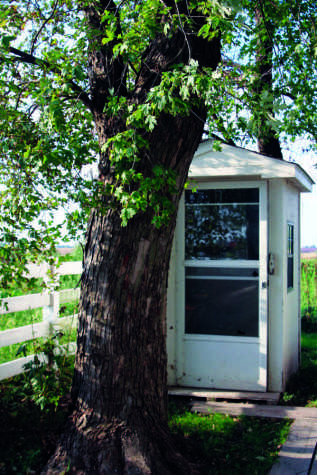
Because Amish children don’t move out of their parents’ house until they’re 21, the older Miller children help teach the younger ones. Because of that,Warren and Ila have found that their youngest children accelerated faster both in learning responsibility and a new language. Each child is initially raised learning Pennsylvania Dutch, a variant of West Central German, before learning English. Their youngest daughter, Marcia, is already bilingual, although she has not yet begun her first year of school.
“We spend a lot less time teaching the last three how to work than the first three,” Warren said. “It’s because they go with their older brother and sister and they learn how [to do things]. It’s amazing what the little ones learn from the older ones.”
Although he works hard to educate his kids, Warren has found that his children have also learned traits that can’t be taught, but rather influenced by the environment they were raised in. Warren’s brother, who was raised Amish, ended up leaving the faith before he was baptised. His four children often visit the Miller family in the summer, and Warren sees the differences in the children’s behavior as a reflection of their living environment.
“They’ll come here, grab their iPod and whatever and sit on the couch all day and do nothing,” Warren said of his brother’s children “And my three will say, ‘This is boring.’ They’ll be out climbing a tree, building a treehouse or a robbing a sparrow nest or chasing a rabbit. It’s a different world.”
Although the Amish don’t always have a definite rule for what technology is and isn’t allowed, they typically use it more sparingly than non-Amish communities might. For instance, they don’t use cars or rubber wheels in order to keep their farms at a manageable size.
“It’s to keep us from going down the road and renting ground 10 miles away and trying to farm five to six hundred acres. That’s what it’s for, it’s not because we don’t believe in tires or whatever. It’s just simply to keep the people at home and keep them smaller. We try to keep each other smaller so we can help each other if there is a big financial problem in the future.
Although they recognize the potential uses of farm machinery, the Millers generally see no benefit in using recreational technology.
“Our rules are no radio, no television, no cameras,” Warren said. “We’re not supposed to use the Internet or Facebook. I guess we don’t have any so we don’t use it.”
While the Amish reject some fixtures of technology in modern life, some do have small phone shacks where they collect voicemails and make calls.
“They are little buildings dotted here and there across the community,” Ila said. “We have one down the road from us which is not far for us to get our calls.”
Although the Miller family uses their phone booth, they don’t condone the use of cell phones. They believe that smartphones are the piece of technology that are most commonly abused by young people.
“I know there’s a temptation in it for some young boys. Especially the cell phones,” Ila said. “They have cell phones and, well, they are human just like you and I.”
In addition to avoiding cell phones, the community has specific guidelines for young people to prevent situations where inappropriate behavior might occur.
“We have our set of rules that are the guidelines to go by, and it makes it easier for everyone and the church if they all go by that,” Ila said. “Of course, there are some that don’t always quite follow them, but a majority do.”
Among the rules are codes about clothing and appearance. In the Amish community of Kalona, women are expected to wear modest dresses in plain colors and hair coverings, while the men wear solid colored shirts with dark pants, shoes and hats. The Amish use their simple clothing as a means of preventing vanity and emphasizing the importance of humility.
“Sometimes I can tell in my girls that they want something a little prettier,” Ila said. “It can be a challenge sometimes.”
The standards in Kalona are relatively lax compared to those of other, more orthodox Amish communities.
“We are, in some ways, a little more liberal as far as dress, tractors, and things like that. If you go to some communities, they strictly farm with horses. They have way stricter dress codes than we do,” Warren said. “It’s very sad, there is a lot more immorality in some of those really little communities. Most of them communities, a lot of those kids will get sick and fed up, then leave, then end up in drugs or you name it.”
Many of the stricter Amish communities also have a different take on the tradition of Rumspringa, a rite of passage whose name comes from the German words for ‘running around.’ In those communities, Rumspringa is a period of several years, often from the ages of 16 through 18, where rules for youth are relaxed as they are allowed to experiment with the outside world. At the end of their Rumspringa, young people get to decide whether or not they would like to be baptized and commit to Amish life. In Kalona, where rules are more relaxed in general, it means that they join a youth group of about 300 and participate in activities such as volleyball, camping and singing.
“The difference in [the meaning of Rumspringa] could really vary whether you’re in Holmes County, Pennsylvania, Iowa, or Minnesota,” Warren said. “It is very broad.”
Before Kalona teenagers join the youth group, they must be baptized, usually soon after their sixteenth birthday. Baptism is considered an important step in the Amish church because it is a promise to follow the religion permanently.
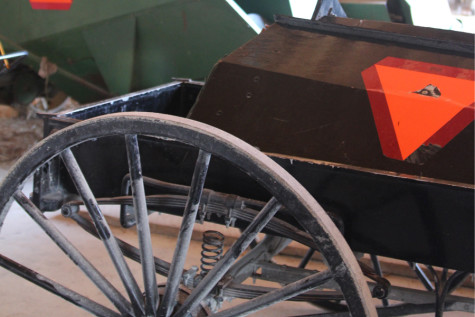
“Another thing I’m looking forward to this Sunday is [Monica] getting baptized,” Ila said. “That’s probably the most important thing in life, because it means that they want to follow Christ.”
Nearly all Amish teenagers in Kalona get baptized and stay with the Amish community, with only a person or two leaving every few years. But according to the Millers, even in communities in Indiana or Pennsylvania with more extreme rules, most young people opt to stay Amish.
“In Indiana, when they’re 16, they’re on their own,” Ila said. “They might get a car, and go do whatever meets their eye. Then later, they meet with an Amish girl and settle down and go back to the Amish again. It’s a very normal thing out there, but here it isn’t.”
In Kalona, many teenagers begin dating when they are introduced to others within their church.
“People usually do have relationships before marriage,” Ila said. “What we call dating is when a boy takes a girl home after youth choir at night.”
Warren and Ila have seen a cultural shift in marriage since their wedding. Currently, it is popular for young people to get married around age 24, which a few years later than they had their ceremony. Although this gap may sound insignificant, the time allows for young people to live independently before starting a family of their own.
“I’d say, when we got married, it was 21 [years old],” Ila said. “Now it seems they’re older. It’s changing.”
However, one tradition has remained: the engagement process.
“We don’t get engaged like you guys do. We get engaged for three and a half weeks and then get married,” Ila said. “That’s how our lifestyle is. We keep it a secret until about a month [before], when they announce it in church. The groom goes to the bride’s home until the day of the wedding and helps out there because there’s a lot of work to be done.”
Amish weddings are usually large events with a few hundred people in attendance. In order to entertain, cook for and serve all of the guests, couples getting married often rely on the help of friends and extended family. The process takes a lot of work, but in the tight-knit Kalona community of about 2,000, turning to friends and neighbors for support is standard practice.
“We all help each other. Say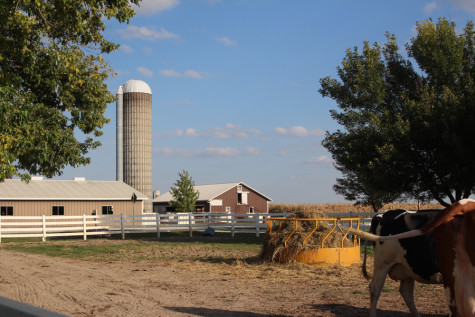 we had a hospital bill. We don’t have insurance, so [our community] would all help us with the load,” Ila said. “We all donate and just help each other pay the bill.”
we had a hospital bill. We don’t have insurance, so [our community] would all help us with the load,” Ila said. “We all donate and just help each other pay the bill.”
The dynamic shifts, however, outside of the community. While Warren has never been confronted or mistreated, he often feels like an outsider once he leaves Kalona.
“Sometimes I feel like we get too much respect. When I travel, I feel better when everybody doesn’t step back and look at you like you’re something queer,” Warren said. “Once in a while you get some disrespect, but not badly. Like once in a while you get some kid who will cut you off at a corner or do something stupid, but it’s a kid. And the thing is, I don’t think it would have made a difference whether you were Amish in a buggy or an old lady in a car. He probably would have done the same thing.”
The Millers don’t judge or condemn people of other religions or lifestyles. Instead, they believe that their own lives are made easier by guidelines and rules.
“The only reason that we live the way we do is that we feel that, especially for our young ones, there is a lot less temptation living this way,” Warren sad. “They can’t just jump in a car and run off and do this or whatever, most of the time. You’re limited with a buggy for what you do.”
